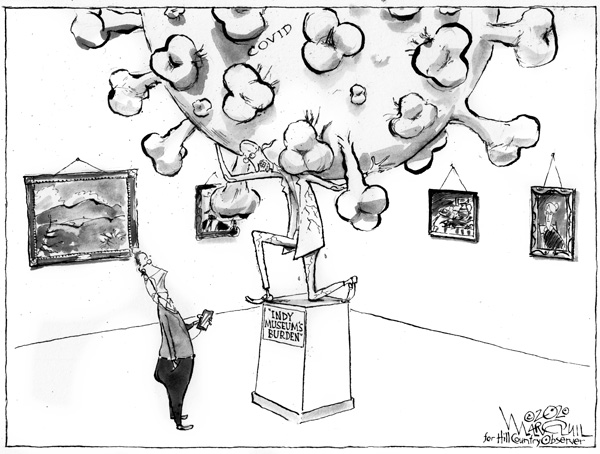Editorial November 2020
E D I T O R I A L
After the campaign: It’s the virus, stupid
As this issue heads to press on the eve of Election Day, we don’t know yet whether the coming year will bring a change in presidential administration or control of Congress.
But it’s becoming clear that no matter who’s in charge in Washington, the next stage of the coronavirus crisis is upon us. We’re facing a new wave of illness that could make this spring’s Covid-19 outbreak look mild. How we meet this challenge will help to determine just how painful and deadly the next few months prove to be.
In this region where Massachusetts, New York and Vermont meet, case counts remain among the lowest in the nation. For now, if we wear masks and keep our distance, most of us can go about our daily lives with minimal risk.
Across the rest of the nation, however, Covid is surging. The count of new infections, which was averaging about 50,000 a day at the beginning of October, rose steadily throughout the month, reaching a record high of more than 98,000 on Oct. 30. In an interview that day with The Washington Post, Dr. Anthony Fauci, the federal government’s top infectious disease expert, bluntly warned that the nation “could not possibly be positioned more poorly” to contain the virus as the flu season arrives.
By late October, it appeared that the huge outbreak across the middle of the United States was approaching our doorstep. In New York, case counts surged in a string of counties along the Pennsylvania border. And case numbers in Pennsylvania, New Jersey and Connecticut all began to exceed the level at which New York ordinarily would have imposed quarantine restrictions for travelers. (The state said it was impractical to apply this rule to neighboring states.)
Massachusetts also saw its daily case counts more than double across October, reaching nearly 1,500 on Oct. 30, though numbers in Berkshire County remained low. On Nov. 2, Gov. Charlie Baker responded by ordering new limits on business hours, a stay-at-home advisory beginning at 10 p.m. nightly, and a ban on indoor gatherings of more than 10 people. He also urged people to wear face masks in public.
The governors in our three-state region, two Republicans and a Democrat, have by and large done well in controlling the coronavirus, with the major exception being large outbreaks in New York and Massachusetts nursing homes early in the pandemic. What’s mostly been missing is leadership and support at the federal level.
This fall’s surge in Covid-19 cases isn’t unique to the United States. By late October, Britain and Europe were imposing new lockdown measures to curb the spread. But America is starting its surge from a much worse place, because its overall case counts already were so high.
No one wants to go back to the blanket shutdowns we endured in April. But with a vaccine still likely many months away, a successful battle to control the virus and rescue our economy will depend on marshalling resources only the federal government can sustain – for testing, contact tracing, protective equipment, and emergency aid to businesses and individuals.
It is a shocking sign of our federal government’s dysfunction that, when an initial coronavirus relief bill ran out over the summer, Congress and the White House spent the rest of the summer and fall dickering without ever reaching agreement on a new round of aid. With the election over, that ought to be the first order of business.


